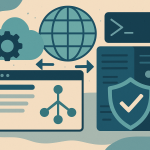7 Tips for Safely Wiping Your Phone Data
Today, we increasingly communicate remotely, and we use many programs to do so. However, the more accounts we have, the higher our security should be. Are you sure that a particular website is anonymous, that your internet service provider is reliable, and, in general, that it is safe to store data on your communication device? All these questions literally haunt users. Some use encryption and authentication, others use VPN and proxy services, and still others use a combination of measures. We will talk about how to properly clear your gadget’s memory. After all, this preventive measure can be extremely necessary. This is necessary in the following cases:
- when you need to change your phone number;
- you buy a new smartphone and sell your old one to a pawn shop or second-hand store;
- if you suspect that you are being followed;
- you are being harassed by strangers who call you or send you messages.
It is not difficult to identify fraudsters; you can use apps that perform reverse name lookup for free. In this case, it will not be necessary to delete the data. However, if you want to ensure complete confidentiality when changing your phone, it is still recommended that you clear your phone’s memory and log out of all accounts.
Maintaining confidentiality and anonymity
The destruction of personal information is very important for anyone who has previously stored it primarily in the cloud. This is especially relevant for legal entities. As described above, this measure is required in a number of cases.
Deleting personal data from your phone is an important step before selling or transferring your device to another person, or if you suspect that it has been hacked. Simply deleting files manually is not enough — data may remain in the memory and be recovered. Here are 7 reliable ways to help you stay safe:
- Log out of all accounts. Before deleting anything, make sure you log out of your Google, Apple ID, or Samsung account, messengers (WhatsApp, Telegram, Viber), email services, and banking apps.
- This will prevent anyone from accessing your data again.
- Delete all files manually: photos, videos, documents, notes, browser history, downloaded files, and correspondence. Clear the trash in all apps.
- Disable synchronization and backups. Stop automatic data backup to the cloud so that information does not remain on Google, iCloud, or other servers.
- Reset your device to factory settings. This will erase all data, including system settings. On Android: Settings → System → Reset. On iPhone: Settings → General → Transfer or Reset iPhone.
- Encrypt your data before resetting. On Android, you can enable encryption so that data cannot be recovered after a reset. On iPhone, encryption is turned on by default if a passcode is set.
- Remove your SIM card and memory card. They may contain contacts, messages, or photos. Be sure to remove them and store them separately.
- Clear your data using specialized apps. Use programs such as iShredder, Secure Eraser, or Shreddit — they wipe data so that it cannot be recovered even with special tools.
A simple reset is not a guarantee of security. Only a comprehensive approach will help you reliably delete your personal data and maintain confidentiality. It’s better to spend a little time now than face trouble later.
These recommendations, which are easy to understand at first glance, will help phone owners avoid spreading information about themselves. However, sometimes even the most routine actions can cause problems. For example, it is not always clear how to log out of an account and delete it from your device. To do this, you need to go to the settings and follow the instructions on the Internet, which describe in detail how to log out of accounts in a way that even a child can understand.
Only after complete deletion, when you click on the gallery, phone book, or mail icon, you will see an empty space. This means that the phone does not contain your data. Don’t forget to clear the app cache and delete any programs you installed while using the gadget.
Additional Measures for Maximum Security
While the steps above provide a solid foundation for wiping your phone, there are a few more advanced yet practical measures you can take for added peace of mind.
1. Double-Check Your Cloud Backups
Even after wiping your device, cloud backups might still contain personal data. Before selling your phone, go into your cloud storage (like Google Drive, iCloud, or OneDrive) and review what’s stored there. Delete any old device backups or unnecessary synced content. Also, turn off automatic backups in your account settings to prevent residual syncing from occurring after the reset.
2. Use a Secure Data Erasure App
While factory resets are helpful, a secure erasure app can go a step further. Apps such as iShredder, Secure Eraser, or Shreddit offer military-grade wiping standards (like DoD 5220.22-M), which overwrite your phone’s storage multiple times. These tools are especially valuable for individuals handling confidential business or legal information.
3. Be Cautious with Trade-In and Recycling Programs
If you’re trading your phone in with a carrier or recycling it through an electronic waste center, don’t assume your data will be handled for you. Always perform a secure wipe yourself before handing over the device. Even reputable companies can make mistakes, and data breaches often stem from improperly handled devices in resale or recycling streams.
4. Physically Destroy Old Memory Cards (When Necessary)
If you’re unable to securely wipe a microSD card or SIM that contains sensitive information, and you don’t plan to reuse it, physically destroying it is a reliable method of data protection. Use scissors to cut through the card, or better yet, crush it completely. Never throw old memory cards away intact.
What About Company-Issued or Managed Devices?
If your phone was issued by your employer or synced with a company IT system, speak with your IT department before wiping it. They may have specific procedures or software for secure data removal. In some cases, wiping the device improperly could violate company policy or cause compliance issues.
Additionally, mobile device management (MDM) software may retain certain access rights even after a reset. Ensure the device is properly unregistered from any business systems or MDM platforms to avoid future access conflicts for the next user.
Conclusion: Prevention Is Better Than Cure
In an increasingly digital world, your smartphone is more than just a communication device—it’s a vault of personal and professional data. Whether you’re upgrading to a new device, donating an old one, or handing it down to a friend or family member, taking the time to properly erase your phone ensures your sensitive information doesn’t fall into the wrong hands.
Simply deleting apps or files won’t cut it. Even performing a factory reset may leave recoverable traces. By combining encryption, secure wiping, and verification, you greatly reduce the risk of identity theft, data breaches, and financial loss.
Your data is your responsibility—treat it as such. Secure wiping may take a few extra minutes, but it’s a small investment in protecting your digital life from irreversible consequences.















